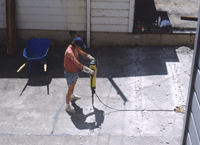The big garden destination for the Sonoma County weekend ended up being CornerStone Sonoma. Imagine a giant garden show with totally unrelated demonstration gardens lined up next to each other in their own stalls like some big horticultural petting zoo. But instead of nice-but-not-so-interesting gardens assembled by local landscapers, you have some really striking spaces put together by some of the bigger names in the landscape architecture field.

Finding the place isn’t hard–Jenny was along for the outing and had brought her GPS. We followed the nice, polite directions of the GPS unit until we got close. The CornerStone literature says to look for the white picket fence as a sign that you’ve arrived. This is CornerStone’s take on a white picket fence, and it’s good preparation for what you’ll find there.
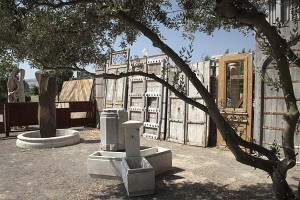
Like many destinations in Sonoma, Cornerstone combines wine tasting opportunities (4 vineyards), with chances to get a bite to eat, and places to shop for gifts or things for your garden. How are you set for some rustic architectural details to set into your landscaping?

Maybe your koi pond needs some mermaids? (John wanted one of these very badly.)
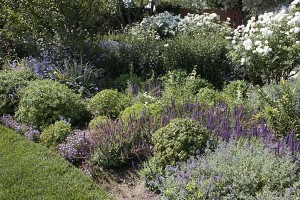
The facility has some pleasant lawn spaces with flowerbeds of cooling purples and blues and whites that were being set up for some social event.
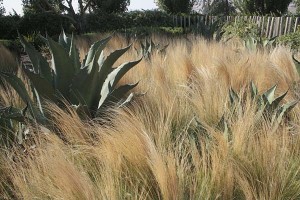
But what sets this place apart are the main gardens in the back. And of all of them it’s hard not to love this one by Oehme & van Sweden, the Garden of Contrasts.

Big, sturdy agaves contrast with soft grasses that move in the wind.
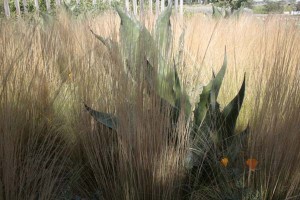
As the seasons change, plants move in and out of prominence in this planting. Here are the last California poppies of the season planted in the grasses.
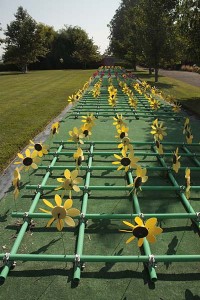
This one might be a little harder to love–or at least it was for me, Ken Smith’s Daisy Border. From the astroturf to the plastic tubes to the plastic flowers, there’s nothing alive in this “planting.” But I suppose it’s naturalistic in the sense that some of the daisies in this border look pretty good, while others seem the worse for wear because of what the elements (and probably small visitors) have done to them. Who ever has a border where every single plant is meticulously well-groomed?
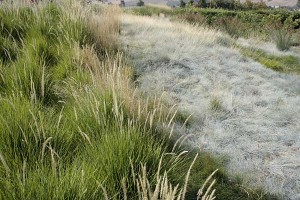
John Greenlee created a soft, rolling planting that consists entirely of grasses, his Mediterranean Meadow. People do all-grass plantings all the time–call it “lawn.” But it’s a brave thing to do a garden with all sorts of contrasting grasses. Here a low river of fescue runs through the plantings.
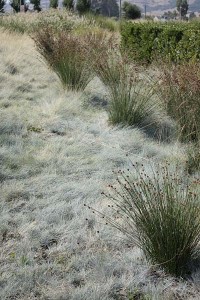
Taller, stiffer grasses (edit: or are these restios?) line the “banks” of the river.
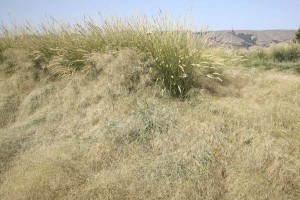
I wish this scene photographed better than it did. The foreground features soft seed heads of a short grass, with a more architectural species planted on the top of the low mound.
This and so many of the other gardens were bubbling over with all sorts of ideas you could repurpose in another garden setting. I’ll share more scenes from CornerStone in the next post.
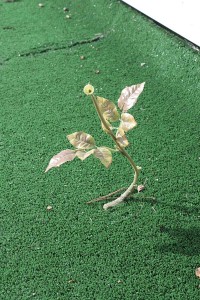
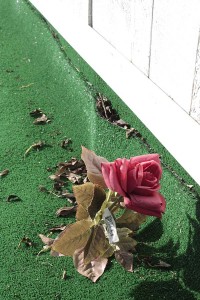















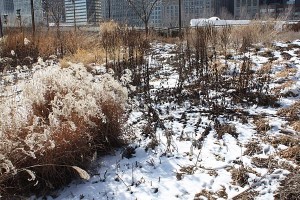
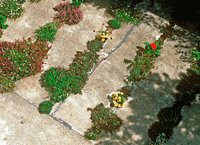 (Photo: Tom Fox)
(Photo: Tom Fox)